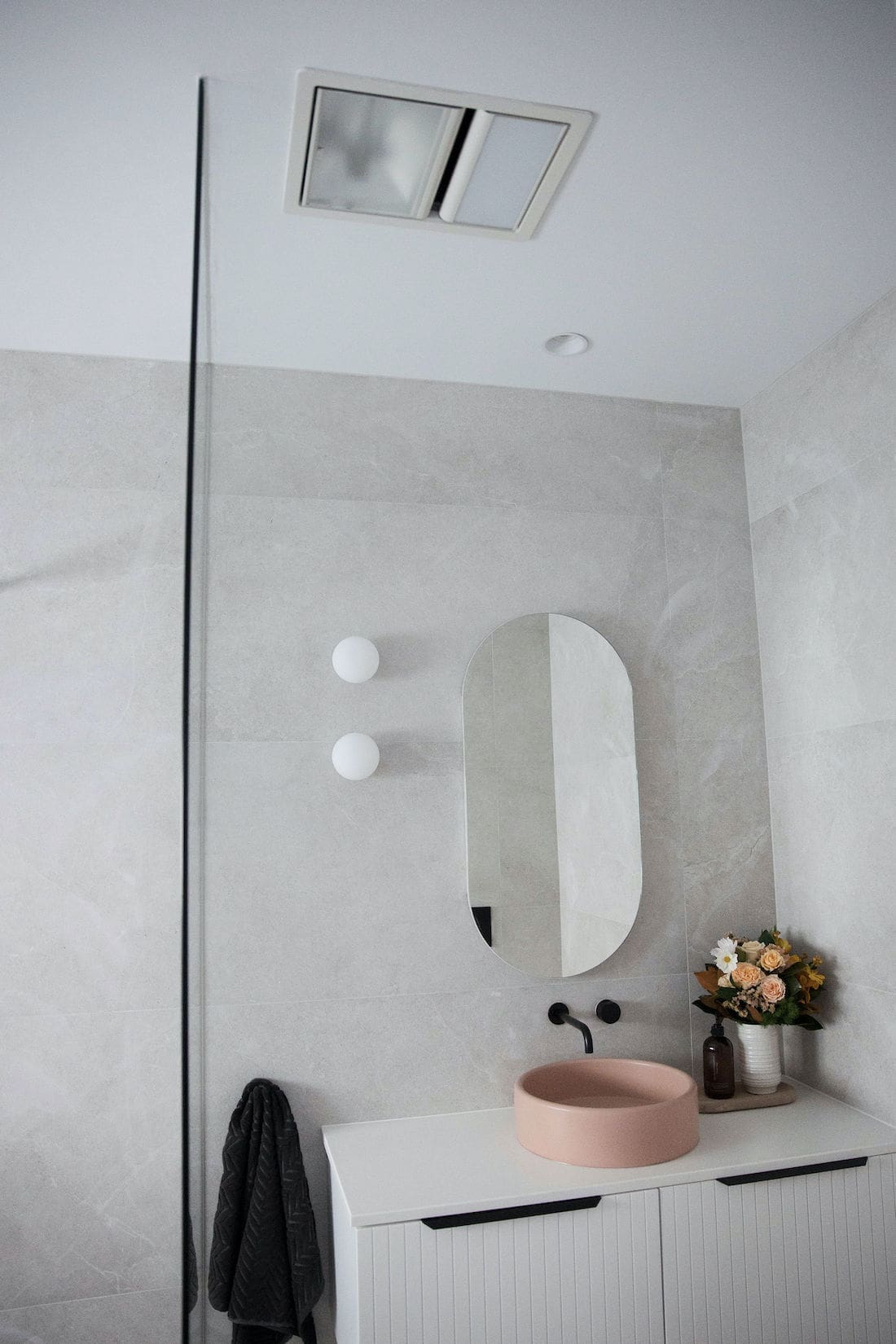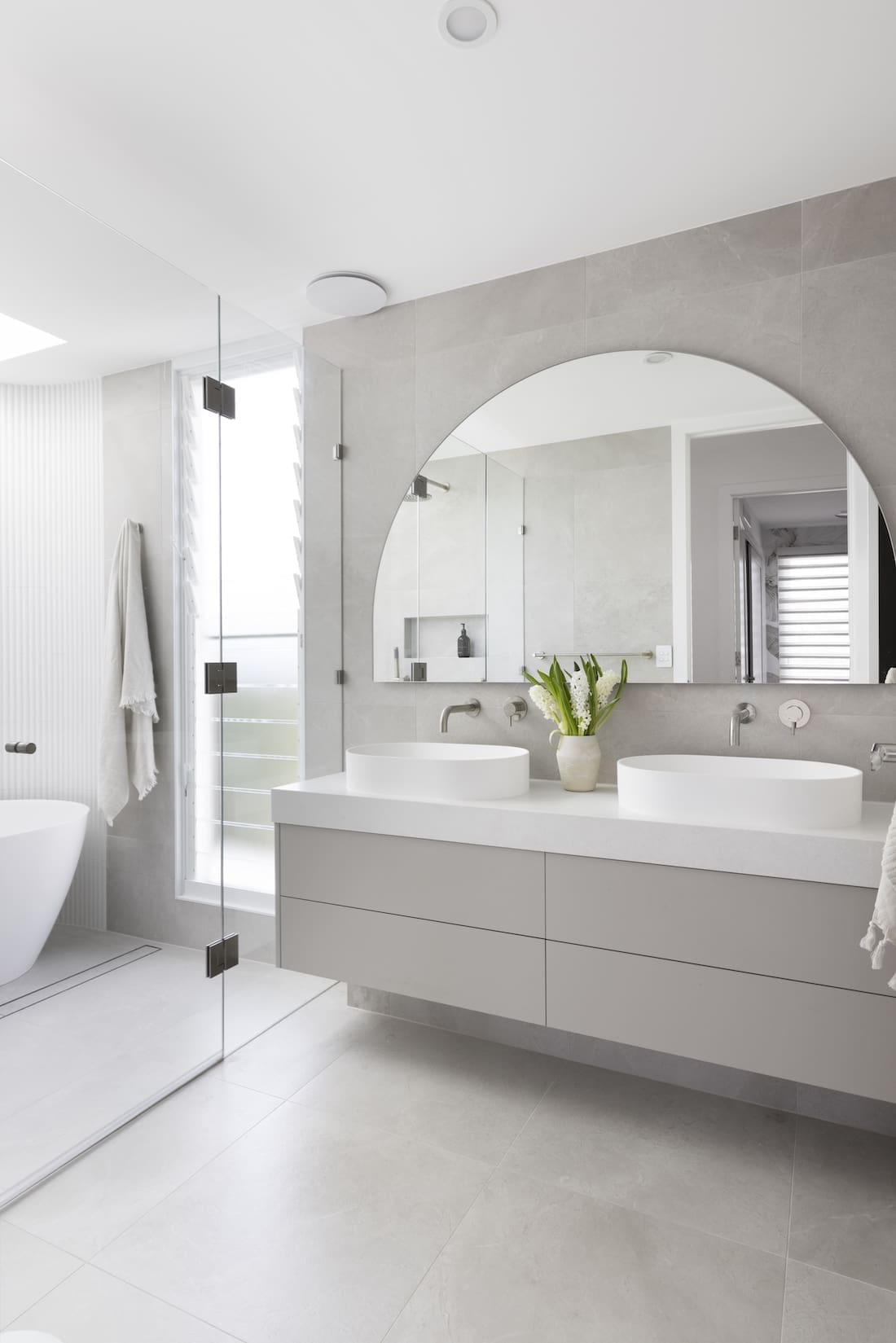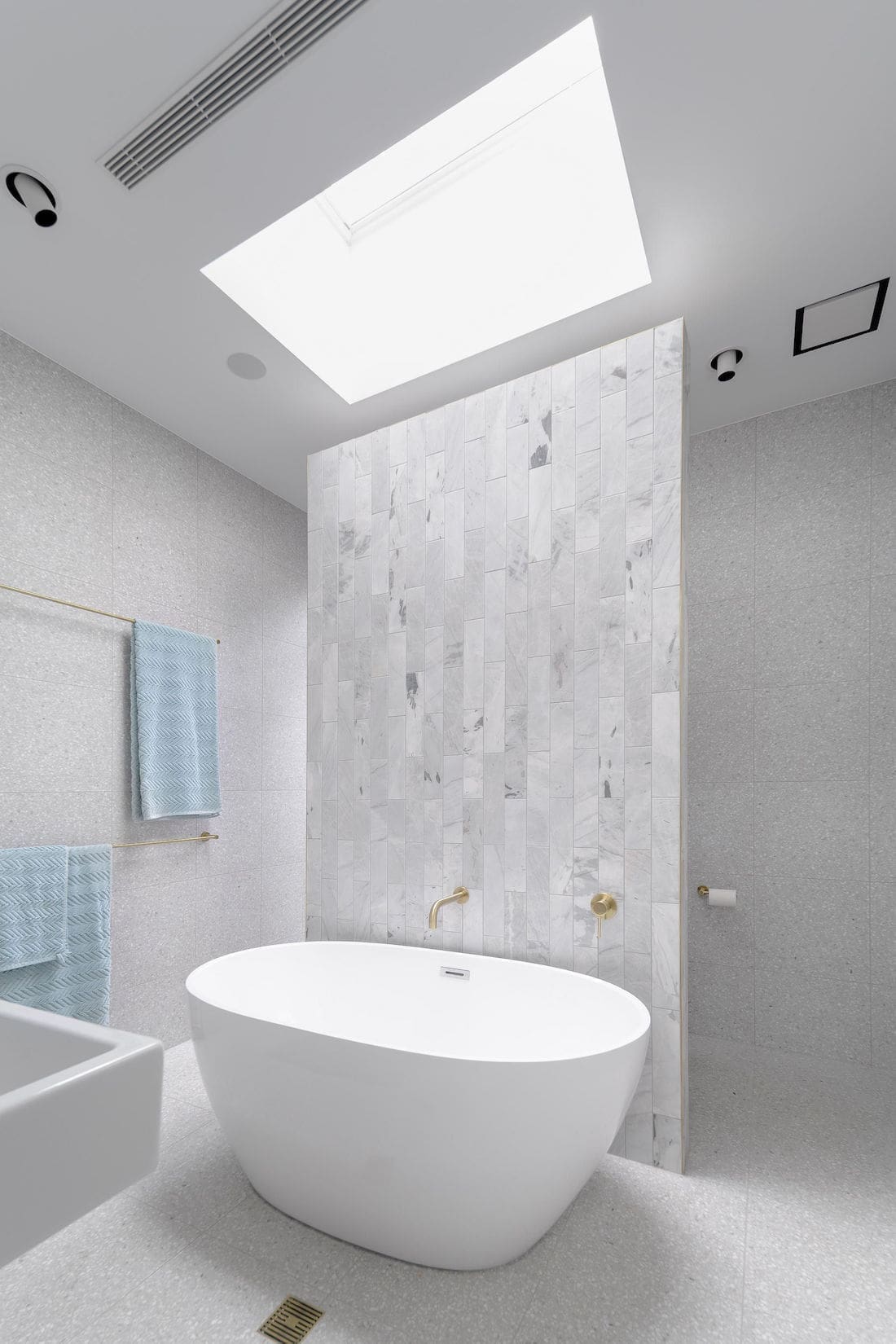When designing a bathroom, it’s easy to focus on the pretty aspects of the space like your tiles and tapware. But overlook essential details, such as your powerpoint placement or what type of exhaust fan to use, and your beautiful design can be diminished… not to mention, lack functionality. Today we’re sharing our top tips to help you choose the right exhaust fan because if you get this wrong, it can lead to a build up of moisture in your bathroom which can in turn lead to mould and other issues.
Learn more about the tips on choosing the right exhaust fan and how electricians can help you.
Related article: Everything you need to know about lighting your bathroom
Related article: 10 types of green bathroom tiles: Be inspired to use green tiles in your next bathroom project

Why it’s crucial to have the right exhaust fan
The primary function of an exhaust fan in the bathroom is to rid the bathroom air of excess moisture, humidity, odours and other pollutants. Without an exhaust fan, moisture can linger in your bathroom and lead to a range of issues including mould, peeling paint, and even damage the structural integrity of walls and flooring.
To avoid costly repairs and to maintain the comfort of your bathroom, it’s essential to have the right exhaust fan. Nowadays there’s a lot of choice on the market when it comes to exhaust fans and the right fan for you will depend on the size of your bathroom, functional requirements (heat lamp and light too or just a discreet fan?), energy efficiency and more. We delve into each of these points below.
As well as picking the right bathroom exhaust fan for your space, it’s just as important to have a professional electrician install it for you. A skilled and fully licensed electrician, like the team at Cyber Electrical, will install it correctly to ensure safety and longevity.

Tips for choosing an exhaust fan
Selecting the ideal exhaust fan is crucial to maintaining excellent air quality and ventilation — whether in your kitchen, bathroom, or workspace. Navigating the world of exhaust fans might seem daunting at first, but it doesn’t have to be. Let us give you the insights and confidence to get this right. Remember, achieving good ventilation is not merely a bonus — it’s essential to successful design.
1. Determine the purpose and size of the space
The first step is to identify the size of the area needing ventilation. Whether it’s a kitchen, bathroom, laundry or workshop, understanding the size and purpose of the space will help tailor the exhaust fan to meet those specific needs. Remember, bigger isn’t always better. Larger fans can be louder and there’s no need for over performance. The goal is to match an exhaust fan to your room’s size and needs.
Why are you in the market for an exhaust fan? Is it the sauna-like conditions post hot, steam and shower? Or it’s the battles against those lingering, stubborn cooking smells. Either way, the solution lies in addressing the problem correctly. We’ll guide you through recognising your specific needs to ensure you make a purchase that truly benefits you.
2. Consider the airflow
Airflow is measured in air changes per hour (ACH). In Australia, the unit is ‘m3 per hour’ and in America it is ‘CFM (Cubic Feet per Minute)’. The rating indicates the air volume the fan can move in a set period of time. Larger spaces require a higher airflow rate to ensure adequate air circulation. Calculating the airflow based on the room size helps determine the fan’s capacity to effectively ventilate stale air from the space, preventing issues related to poor air circulation.
3. Noise level
Maintaining a comfortable environment in spaces where the exhaust fan will be installed close to living areas crucially requires considering the noise level. Fans with lower sones produce less noise during operation, providing quieter performance. Fans with noise ratings below 1.0 sone are typically regarded as quiet, making them suitable for areas where noise reduction is a priority.

4. Energy efficiency
Choosing an energy-efficient exhaust fan is about more than doing your bit for the planet — it’s also a smart way to keep those electricity bills in check. How can you be sure your fan is energy-efficient?
Exhaust fans don’t come with a star rating like many household appliances. Generally, fans with a lower airflow rate have a lower wattage and require less energy. However, if the fan is too small for your space it will need to run much longer to do its job. That’s why we started this guide to selecting the right bathroom exhaust fan with the size and purpose of your space.
5. Installation and ventilation type
Determining the appropriate installation type is crucial to ensure the exhaust fan effectively meets your ventilation requirements. Whether wall-mounted, ceiling-mounted, or an inline fan, each type has its advantages based on the specific needs and layout of the area. Ensuring compatibility with the available space and ventilation requirements is essential for optimal performance.
For the most discreet bathroom exhaust fan, check out the shadowline range by Expella we recently featured.
6. Moisture and humidity sensing
Adding moisture or humidity sensors to your bathroom fans can improve their game. Think of it as your bathroom getting a tech upgrade. These savvy sensors automatically kick the fan into gear when they pick up on too much heat or moisture. It’s ideal in households where people can forget to turn the exhaust on or that are prone to moisture build up. Once the fan does its magic and the air is fresh again, the fan automatically turns itself off.
You end up with a win-win: your bathroom stays healthy, and you get to save on energy. It’s all about keeping things simple, convenient, and efficient for you.

7. Durability and maintenance
Selecting a fan made from durable materials is crucial, especially vent fans used in environments with high humidity or temperature fluctuations. Durable construction ensures the fan can withstand the exposed conditions, promoting longevity and reliable performance. Additionally, checking if the fan is easy to clean and maintain is essential for preserving its optimal functionality over time. Regular maintenance keeps your exhaust fan working at optimal efficiency and extends its lifespan.
When installing an exhaust fan, it’s essential to consider the space and your needs, including size, noise preferences, energy efficiency, installation type, sensor features, and durability. If uncertainties arise, seek the advice of a professional or hire a qualified technician to help you make the right choice.
Do you have any questions about exhaust fans we didn’t cover? Pop a comment below and we’ll get back to you asap!






